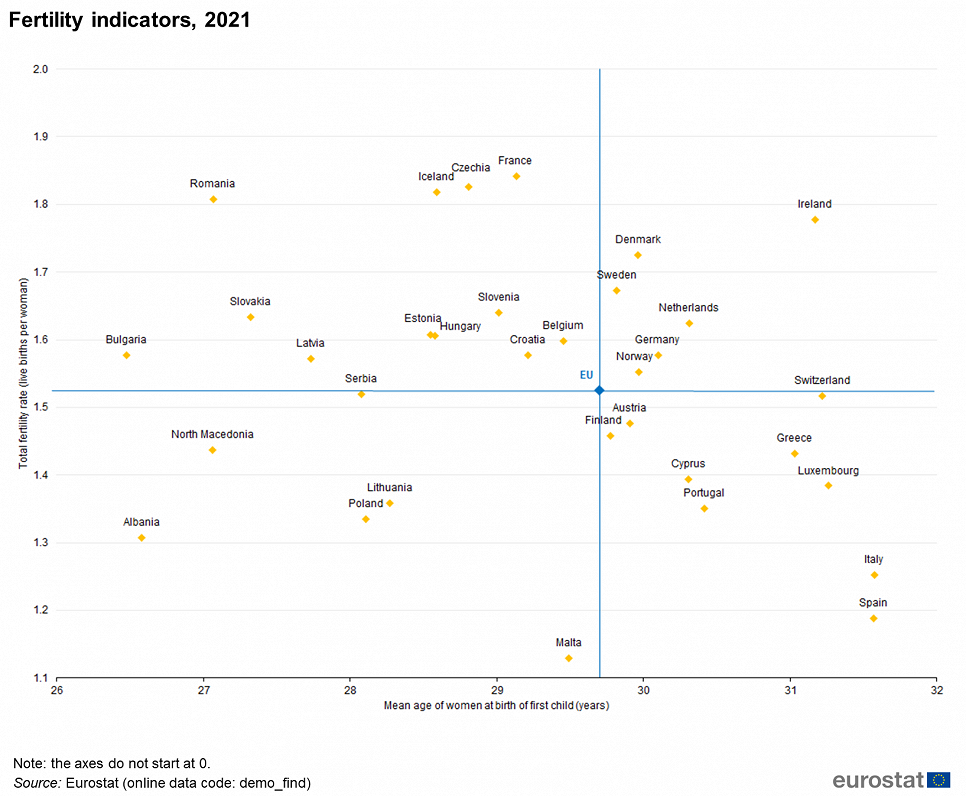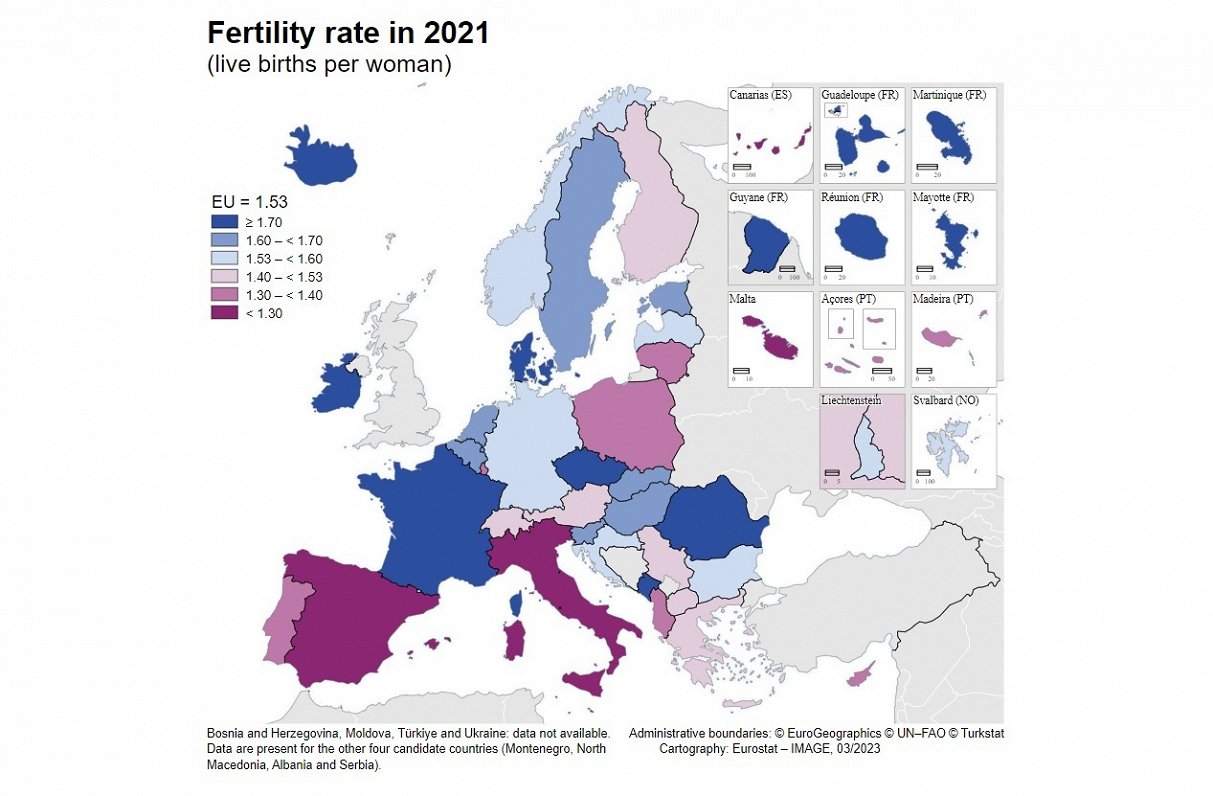The total fertility rate stood at 1.53 live births per woman in the EU in 2021 and in 2019, the number was slightly higher than in 2020 at 1.50.
The fertility rate in 2021 was slightly less than the peak seen in 2016 (1.57) but was an increase compared with 2001 (1.43). The highest total fertility rate since the start of the comparable time series was 1.57 in 2008, 2010 and 2016. In the intervening years, it fluctuated between 1.51 and 1.57.
In 2021, France had the highest total fertility in the EU (1.84 live births per woman), followed by Czechia (1.83), Romania (1.81) and Ireland (1.78).
Latvia's fertility rate in 2021 was 1.57, putting it very slightly above the EU average. It is an increase on the figure of 1.55 for 2020 but below the figure of 1.61 for 2019.
According to Eurostat: "Some of the countries with the highest total fertility rates also had a relatively high mean age of women at the birth of their first child. Four different groups of EU Member States can be broadly identified based on their position with respect to the EU averages (as identified by the quadrants defined by the blue lines). The first group (top right quadrant) is composed of Denmark, Germany, Ireland, the Netherlands and Sweden, as well as Norway where both the total fertility rate and the mean age of women at the birth of their first child were above the EU average.
"A second group (bottom left quadrant) is made up of Malta, Lithuania and Poland: both their total fertility rates and mean ages of women at the birth of their first child were below the EU averages, as was also the case in Albania, North Macedonia and Serbia. A third group (bottom right quadrant) composed of Greece, Spain, Italy, Cyprus, Luxembourg, Austria, Portugal and Finland, as well as Switzerland recorded a higher than average mean age of women at the birth of their first child but a lower total fertility rate than the EU average. The final group (top left quadrant) was composed of Belgium, Bulgaria, Czechia, Estonia, France, Croatia, Latvia, Hungary, Romania, Slovenia and Slovakia, as well as Iceland; in each of these, the total fertility rate was higher than the EU average but the mean age of women at the birth of their first child was below the EU average."

Close to half (45.5 %) of the children born in the EU in 2021 were first born children, with this share exceeding half in Luxembourg (53.2 %), Portugal (53.0 %), Romania (52.4 %) and 50.3 % in Malta (see Figure 6). By contrast, the lowest shares of first-born children were recorded in Estonia (37.2 %), Latvia (38.2 %) and Ireland (38.7 %).





























